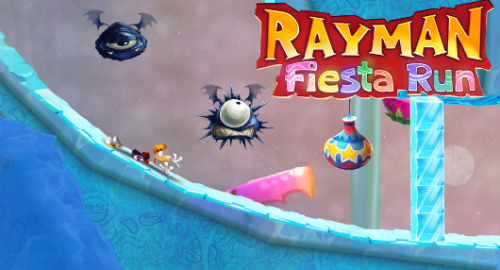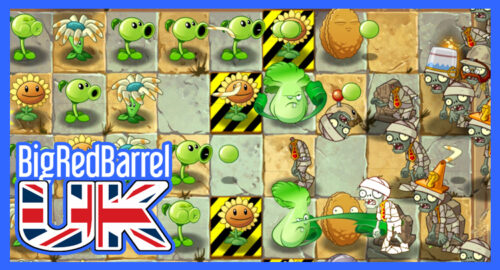On the 5th October 1999, my friends and I rode our bikes from school into town with the soul purpose or picking up our pre-orders for Pokémon Red & Blue (I went with Blue if you were wondering). We then headed back to my house and proceeded to play the game all night long, trading, battling and exchanging tips until the early hours of the morning. Nearly 17 years on, this remains one of my most vivid video game experiences of all time.
Cut to modern day and we have a Pokémon experience like never before with the new mobile title from Niantic that isn’t just portable but fully requires you to go outside and explore.
• Developer: Niantic
• Publisher: The Pokémon Company
• Reviewed on: Android
• Also Available On: iOS
• Release Date: Available Now

I think you’d be hard pushed at this point to have not heard about Pokémon Go in some form by now. This majorly popular mobile game has flooded the internet and is quickly climbing the ladder to join some of the most downloaded apps of all time – having beaten Tinder and now heading for Twitter.
If you’re unsure of the mass appeal, Pokémon Go brings, well so am I? No really, I don’t get it, and I like the game. There are bugs, it crashes, there’s not much to do, but I can’t stop playing it. Maybe this is all down to nostalgia for a simpler time, when I could play one of these games and not have to worry about things like different regions, 2-on-2 battles or cosplay Pikachu? Maybe the game is just like all the other addictive free to play titles that often get brought into the media, with their young audience and lax rules on micro transactions? All I know if that I’ve gotta catch them all and that means I’ve gotta get outside and find them.

So getting out and about is the point here as the game is essentially Ingress (another mobile game by Niantic) but with those likeable virtual creatures jumping out at random moments. You have to go out into the real world to not only capture Pokémon but also visit Pokéstops and Gyms. Pokéstops are located at famous buildings, landmarks and points of interest – something that’s also carried on from Ingress. When visiting a stop, you can collect items such as Pokéballs, Potions and eggs (which will hatch into other Pokémon but only after more walking). Much like in the traditional games, Gyms are where you go to fight.
After a bit of introduction and playing around in the world, you’ll eventually be able to assign yourself to one of the game’s three teams – Valor, Mystic & Instinct (Red, Blue & Yellow), and take over Gyms in your team’s name. Once taken over, you can designate one of your Pokésquad to that area to challenge others (which is returned to you once beaten). If a gym is already under the control of somebody in your team, you can use that Gym to train yourself or throw one of your Pokémon on top of their line-up to increase the difficulty in taking it over.
But of course, what would be a Pokémon game without any Pokémon (Pokémon Snap probably)? This is that game that makes you feel like an actual Pokémon Trainer by going out into the real world and hunting/catching the little blighters… or it would be if Trainers didn’t bother battling and jut lobbed Pokéball after Pokéball at a lone Pidgey. You don’t fight in the traditional sense; you just throw Pokéballs by swiping your finger and hope that it does the job – if not then there are items you can pick up at Pokéstops to make this process easier. I’d be lying if I said I didn’t find this disappointing at first but it’s a free to play mobile game and not the £45-£50 handheld console title, so I guess changes had to be made. In fact, the only fighting this the game during the aforementioned Gym battles, and these are just solved with a game of tapping.

With all that said, I’m still playing, and I’m not entirely sure why but I know it’s fun. Since the game’s release (and the one week prior, like most UK players), I’ve been battling for a Gym at a pub while others attempt to do the same, discovered areas of my neighbourhood I never knew existed, conversed with complete strangers, engaged with friends that “don’t usually play games” and most importantly, I’ve got some exercise. That seems to be the biggest highpoint of this game is making kids active, but it’s working on a thirty-something adult too. I found myself getting up early on a weekend to go walking for a near seven-mile Pokéwalk!
However, perhaps the smartest action taken by Niantic is the inclusion of the original 150 Pokédex roster (which I’m sure will extend eventually). The whole retro feel of the original line-up is what makes the game appealing to once children from the original games’ who are now the adults of today and hey… I’ve got a Squirtle, and that makes me happy!
Even with the enjoyment, I get from going out and catching Pokémon in the real world to try and build my original team; the game is not without its faults… the many, many faults. Servers strain under the weight of the numerous users that they are simply not ready for, the game crashes at the worst moments (either when spotting or catching a rare Pokémon) and you have to keep the app open at all times if you want to make progress – which is a massive drain on your phone’s battery. There are also features the game could use to give it some staying power, like multiplayer battles and trading – though Niantic is working to bring new features to the title.
While Pokémon Go is far from a perfect title, I can’t deny that it’s fun. Going out into the world and chasing down Pokémon to fulfil the one real aim in life, to catch them all. Thanks to the power of cute little virtual animals, children & adults alike are getting outside to socialise, exercise and have fun.
[youtube id=”2sj2iQyBTQs”]






